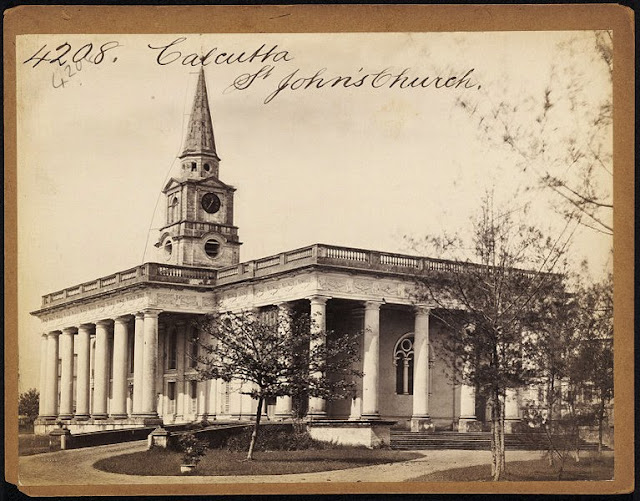Calcutta High Court
If you are from Belgium and particularly from the town of Ypres, here is some interesting information for you.
There is a connection between Ypres (http://en.wikipedia.org/wiki/Ypres) and Calcutta (now Kolkata), one of the most populated city in the world at present. There are two buildings in the two cities which are visually similar. The buildings are Clothes Hall at Ypres and Calcutta High Court. Clothes Hall was built in 12 century and Calcutta High Court was constructed in the late nineteenth century based on the design of the Clothes Hall.
There is a connection between Ypres (http://en.wikipedia.org/wiki/Ypres) and Calcutta (now Kolkata), one of the most populated city in the world at present. There are two buildings in the two cities which are visually similar. The buildings are Clothes Hall at Ypres and Calcutta High Court. Clothes Hall was built in 12 century and Calcutta High Court was constructed in the late nineteenth century based on the design of the Clothes Hall.
The Town Hall of Ypress on fire in 1914
Ypres was a strategic township during the first world war. Clothes Hall, the massive structure was burnt down during the war (above photo) in 1914. After the war, the entire township was reconstructed. Architects and the local authorities came at Kolkata to get the design and the architecture of High Court building. They returned back and reconstruct the Clothes Hall with slight modification. The new structure at Ypres has already been declared as the UNESCO World Heritage site.
The large water tanks (see the photograph at the top) have already filled up
Built in Gothic style of architecture the front of the building made off stone block. A grand colonnade is at the lower story of the south front. The capitals of the pillars are off beautifully sculptured Caen stone. A tower is at the center of the south front which is 180 feet high and is little taller than the Ochterlony monument (popularly known as the Shahid Minar) at Kolkata. Main entrance is through the tower (photograph- fourth from the top) and the main stair is within it. There is a well maintained lawn inside the High Court building.
The tower from below the main entrance
Very few know that three Europeans used to stay in three different houses just at the site where the High Court building finally constructed. Longueville Clerk, William Macpherson and Sir James William Colvije were the three person.
Calcutta High Court is the oldest of all the High Courts in India. The sepoy mutiny in 1857 necessitated rethinking on the administrators of India, reforms and recognition of the law courts did not lag behind. Actually, it was established on 1st July 1862 as the High Court of Judicature at Fort William. It was under the High Court Act which was established in 1861 but the building was constructed later on.
In the early days of the High Court building, there was a large tank just in front of the building. It was filled up later on to built a road there (see the photograph at the top),.
What to see-
The judges lawn inside the High Court building of Kolkata
Calcutta High Court is the oldest of all the High Courts in India. The sepoy mutiny in 1857 necessitated rethinking on the administrators of India, reforms and recognition of the law courts did not lag behind. Actually, it was established on 1st July 1862 as the High Court of Judicature at Fort William. It was under the High Court Act which was established in 1861 but the building was constructed later on.
Calcutta High Court, the above photograph was taken in 1890.
The High Court building from the Western side.
Over the years, the repairing and the maintenance was not up to the mark. The massive building got the heritage tag and so every repairing works had to be within the specified parameters.
The series of pillars with triangular arches
Unfortunately a lot of damage has been done. AC machines and ducts have been installed through the walls more than 30 years ago. That was the first damage. Recently in 2011 and 2012, the stone blocks of the veranda at the ground floor was replaced with thin marble tiles.
Calcutta High Court (courtesy- LIFE )
Obviously the architecture.
Entry is not restricted inside the building and the court room but photography inside the building is strictly prohibited.
How to reach-
Nearest metro station - chandni chowk. It will take around 15 to 20 minutes walk to reach at Calcutta High Court.
(The building from wikimapia)
Location-
Adjacent to the West Bengal assembly house and Netaji Indoor Stadium.
++-+Mid+19th+Century+(Third+View).jpg)

.jpg)
.jpg)
.jpg)
+High+Court+-+India+1890s.JPG)

.jpg)





.JPG)
.JPG)


.JPG)
.JPG)
.JPG)
.JPG)
.JPG)
.JPG)
.JPG)
.JPG)